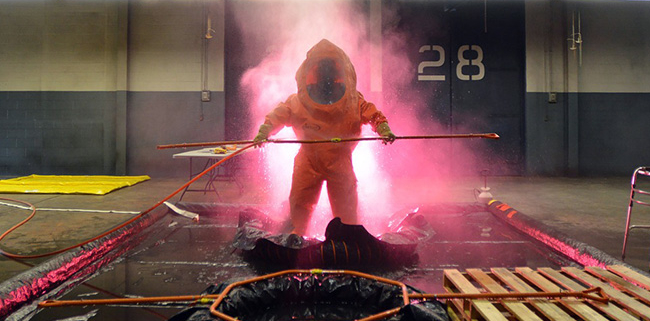Toxicity: Person, Place, or Thing?
I rarely talk about the dirty little secret in leadership: Toxicity.
We have all been there and seen that, yet it continues to exist in the contemporary workplace. Some of this toxicity can be identified as:
- Old Yeller. The person whose voice must bellow across the office for the simplest things.
- Screech The Screamer. The person who believes that the louder they say something with angry overtones, the more likely it is to be true or become reality.
- The Scorcher. The person whose approach to every situation is FLAME-ON!, it’s time to fight!
- The Bully. “Let’s get it straight: I’m in charge!” or “You think you can take me? Huh?” or “We’ll see on your annual evaluation.”
- The Quiet Assassin. The person who never confronts anyone, but plunges a knife in your back so deeply that it protrudes out of the front.
Do any of these look familiar?
Several years ago I had a conversation with a doctoral colleague regarding the oxymoron of Toxic Leadership. I stated my premise as a simple one:
“There are no toxic leaders, only toxic people in leadership positions.”
Toxic people are all three: person, place, and thing. They plow a path of destruction, creating environments of mistrust and discord, that leave broken people and organizations in their wake.
Toxic ‘leaders’ thrive because as Sutton wrote, “they kiss up even as they kick down” (Reed & Olsen, 2010, p. 9). Sutton (2007) wrote the book The No A$$hole Rule, which a senior military officer explained to me as something to always be aware of and to look out for. The officer called it the Two-Step Rule: Timing and the A-Hole Factor.
Often heard excuses about toxic people are that “They never act that way at home”, or “He/she is a really good person to his/her friends”, or “It must be the job.” Those excuses do very little to resolve the work environment at hundreds of organizations impacting thousands of people.
Lipmen-Blumen (2005) believes that toxic leaders are enabled by passive followers, blind supervisors, and organizational cultures. My observation is that:
“Toxic people protect toxic people.”
Much of the literature does not provide the HELP needed on the image, but there are some strategies that may be effective.
a. Call Out the Behavior. Radical, I know, but telling someone how they make you feel when they holler, scream, or belittle may be the first time the person has heard that. Do this in private, not public, in a cool, calm, matter-of-fact manner.
b. Do not respond to the behavior. Again, an unconventional concept, but not responding to the hollerer may cause them to come to your location, and speak in a civil tone. It worked for me.
c. Poker Face. No expression may actually convey an expression of, “You can’t break me” or “I have no idea why you are acting this way.” This may make the toxic person more upset, until they realize that you will not flinch, will maintain your composure, and remain professional. This takes the fun out of the toxic behavior.
d. Outfox Them. If you undercut the reason for the behavior, the behavior may subside. If there is an issue, ask to speak with the boss directly, not Igor – the ugly sidekick. Be the expert in your arena, so you cannot be undermined. Become invaluable, but be yourself.
e. Values. Even toxic people have something that is important to them. Some set of values, The Golden Rule, a Code that even they will not violate. If you can find it, appeal to it, to make the work environment a better place.
Toxicity in the workplace is a pervasive problem throughout all facets of society and in practically every industry, so the possible solutions are likely exhaustive. If you trace the toxic person, you may also find signs of the aberrant behavior at home. Short of ‘ignoring the behavior’, ‘just sucking it up’, or ‘getting another job’, isn’t it worth trying to explore and lessen the impact of toxic people?
How do you handle toxic people in leadership positions?
References:
Lipman-Blumen, J. (2005). The allure of toxic leaders: Why we follow destructive bosses and corrupt politicians – and how we can survive them. New York, NY: Oxford University Press
Reed, G. E. & Olsen, R. A. (2010). Toxic leadership: Part deux. Military Review, 90(6), 58-64.
Sutton, R. I. (2007). The no a$$hole rule: Building a civilians workforce and surviving one that isn’t. New York, NY: Warner Business Books





